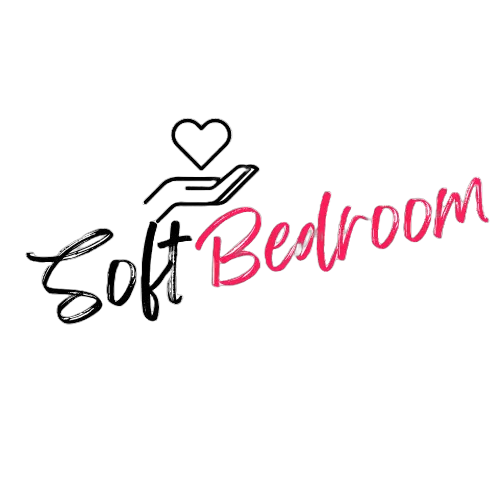Disclosure
This website is a participant in the Amazon Services LLC Associates Program, an affiliate advertising program designed to provide a means for us to earn fees by linking to Amazon.com and affiliated sites.
Calculate your sleep efficiency to better understand your sleep quality and make improvements to your sleep schedule.
Note: This calculator uses the Duration of Sleep Episode (DSE) formula for more accurate sleep efficiency calculation: SE = TST / DSE (× 100), where DSE includes only time spent attempting to sleep, not other activities in bed.
Sleep Efficiency Scale
Now that you have calculated your sleep numbers, take a look at the table to get an idea of where you fall on the sleep efficiency scale:
| Sleep Efficiency | Interpretation | Recommendation |
|---|
| 95% or greater | Too high? Your efficiency is very high, possibly too high. Consistently scoring above 95% could indicate that you are not getting enough sleep. Are you going to bed very late and getting up early? Are you getting enough sleep? | Set bedtime for this week should be 30 minutes earlier |
| 90% to 94% | Great result! When you are in bed you are spending most of your time asleep. | Set bedtime for this week should be 15 minutes earlier |
| 85% to 89% | Great result! When you are in bed you are spending most of your time asleep. | Set bedtime for this week should be unchanged |
| 70% to 84% | Some opportunity for improvement. Ideally, you should be spending a larger proportion of your time in bed asleep. | Set bedtime for this week should be 15 minutes later |
| Less than 70% | Lots of opportunity for improvement. You are spending more time in bed while awake than is recommended. You may be finding it difficult to get to sleep, stay asleep, or both. | Set bedtime for this week should be 15 minutes later |
🌙
Bedtime Routine
Establish a consistent bedtime routine to signal to your body that it’s time to sleep.
📱
Screen Time
Avoid electronic devices at least 1 hour before bedtime as blue light affects melatonin production.
☕
Caffeine Intake
Limit caffeine consumption after noon as it can stay in your system for 6+ hours.
Important Sleep Efficiency Facts
| What is Sleep Efficiency? |
|---|
- Sleep efficiency is the percentage of time spent asleep while attempting to sleep.
- The research-based formula for calculating sleep efficiency is: SE = Total Sleep Time (TST) / Duration of Sleep Episode (DSE) × 100%
- Duration of Sleep Episode (DSE) = Sleep Onset Latency (SOL) + TST + Wake After Sleep Onset (WASO) + Time Attempting to Sleep After Final Awakening (TASAFA)
- Total Sleep Time (TST) is the actual time spent sleeping, not just lying in bed.
- Time spent in bed doing non-sleep activities (reading, watching TV) should not be counted in sleep efficiency calculations.
- A sleep efficiency of 85% or higher is generally considered normal for adults.
- Poor sleep efficiency can lead to daytime sleepiness, reduced cognitive function, and other health issues.
- Sleep efficiency can be improved through consistent sleep schedules, proper sleep hygiene, and addressing underlying sleep disorders.
- Sleep efficiency tends to decrease with age as sleep becomes more fragmented.
- Environmental factors like light, noise, and temperature can significantly impact sleep efficiency.
|
Factors Affecting Sleep Efficiency
| Factor | Description |
|---|
| Sleep Environment | A comfortable mattress, optimal room temperature (60-67°F or 15-19°C), minimal noise, and darkness can significantly improve sleep efficiency. |
| Stress and Anxiety | Mental health issues can lead to racing thoughts, making it difficult to fall asleep and stay asleep, thus reducing sleep efficiency. |
| Caffeine and Alcohol | Caffeine is a stimulant that can delay sleep onset, while alcohol may help you fall asleep faster but disrupts sleep quality in the latter half of the night. |
| Screen Time | Blue light from electronic devices can suppress melatonin production, delaying sleep onset and reducing sleep efficiency. |
| Exercise | Regular physical activity can improve sleep efficiency, but exercising too close to bedtime may have the opposite effect for some people. |
| Diet | Heavy meals close to bedtime can cause discomfort and indigestion, making it difficult to fall and stay asleep. |
| Sleep Disorders | Conditions like sleep apnea, restless legs syndrome, and insomnia can significantly reduce sleep efficiency. |
| Age | Sleep architecture changes with age, leading to more fragmented sleep and reduced sleep efficiency in older adults. |
| Medications | Many medications, including some antidepressants, blood pressure medicines, and corticosteroids, can affect sleep quality. |
| Circadian Rhythm | Irregular sleep schedules, shift work, and jet lag can disrupt your body’s internal clock, affecting sleep efficiency. |
Fun Facts About Sleep
| Fun Facts |
|---|
- Humans are the only mammals that willingly delay sleep.
- 12% of people dream entirely in black and white.
- The record for the longest period without sleep is 11 days, set by Randy Gardner in 1964.
- Certain studies have shown that sleeping after learning can improve memory retention by up to 30%.
- Sleeping less than 7 hours per night reduces your life expectancy.
- Some scientists believe we dream to process emotions and consolidate memories, while others think dreams are just random brain activity.
- You can’t sneeze while sleeping because the neural pathways that trigger sneezing are suppressed during sleep.
- Japanese workers sometimes take “inemuri,” or napping on the job, which is viewed as a sign of dedication—you’ve worked yourself to exhaustion.
- During REM sleep, your body becomes temporarily paralyzed to prevent you from acting out your dreams.
- Some animals, like dolphins and whales, sleep with only half their brain at a time, keeping one hemisphere awake to control breathing and watch for predators.
|
